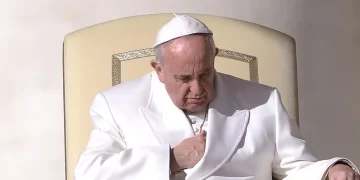The 2016 Nobel Prize for Chemistry has been awarded for the development of the world’s smallest machines.
Jean-Pierre Sauvage, Sir J Fraser Stoddart and Bernard L Feringa will share the 8m kronor (£727,000) prize for the design and synthesis of machines on a molecular scale.
They were named at a press conference in Sweden.
The machines conceived by today’s laureates are a thousand times thinner than a strand of hair.
They could slip inside to human body to deliver drugs from within – for instance, applying pharmaceuticals directly to cancer cells.
This field of nanotechnology could also yield applications in the design of smart materials.
The prize recognises their success in linking molecules together to design everything from motors to a car and muscles on a tiny scale.
“They have mastered motion control at the molecular scale,” said Olof Ramstrom, from the Nobel Committee.
Reacting to the award, Prof Feringa said: “I don’t know what to say, I’m shocked. And my second remark was: ‘I’m a bit emotional about it’.”
The celebrated physicist Richard Feynman is often credited with inspiring the concept of molecular machines.
In a lecture at the California Institute of Technology (Caltech) in 1959, titled “There’s plenty of room at the bottom”, he considered the possibility of the direct manipulation of matter at the atomic scale.
He talked about the idea of “swallowing the doctor” – introducing the drug delivery concept.
Jean-Pierre Sauvage was born in 1944 in Paris, France. He is currently emeritus professor at the University of Strasbourg and director of research emeritus at the French National Center for Scientific Research (CNRS).
Sir Fraser Stoddart was born in 1942 in Edinburgh, UK. He is currently affiliated to the Northwestern University, in the US.
Bernard L. Feringa born in 1951 in Barger-Compascuum, the Netherlands. He is a professor in organic chemistry at the University of Groningen, the Netherlands.
Previous winners of the Nobel Prize in Chemistry
2015 – Discoveries in DNA repair earned Tomas Lindahl and Paul Modrich and Aziz Sancar the award.
2014 – Eric Betzig, Stefan Hell and William Moerner were awarded the prize for improving the resolution of optical microscopes.
2013 – Michael Levitt, Martin Karplus and Arieh Warshel shared the prize, for devising computer simulations of chemical processes.
2012 – Work that revealed how protein receptors pass signals between living cells and the environment won the prize for Robert Lefkowitz and Brian Kobilka.
2011 – Dan Schechtman received the prize for discovering the “impossible” structure of quasicrystals.
2010 – Richard Heck, Ei-ichi Negishi and Akira Suzuki were recognised for developing new ways of linking carbon atoms together.
2009 – Discovering the structure and function of our cells’ “protein factories”, earned the chemistry Nobel for Venkatraman Ramakrishnan, Thomas Steitz and Ada Yonath.
Source: BBC

































